On January 28, Li Yongdong, professor of the Department of Electrical Engineering and Applied Electronics of Tsinghua University and Head of the Green Transport Drive and Efficient Energy Conversion Research Center of the Energy Internet Research Institute, accepted an exclusive interview by CGTN Francais. Li Yongdong has a lifelong passion for trains. Born in Zhangjiakou, he grew up traveling along the Beijing-Zhangjiakou Railway, the first railway designed and built by Chinese people. In the 1980s, he went to study in Toulouse, France, where he witnessed the world-leading high-speed railway technology. Inspired by this experience, he vowed to contribute to his motherland’s railway development. After graduation, Li Yongdong returned to China and became a professor of railway engineering. Today, his youthful dream has come true, as he has participated in the remarkable progress of China’s high-speed railway. He is now riding on the autonomous train for the Winter Olympics, running at 350 kilometers per hour, and sharing with us his vision for the next generation of China’s high-speed railway.
For the story of the early development of China’s high-speed railway, please refer to the article “High-speed Railway Ambition” co-authored by Li Yongdong, Wei Liming and Ni Jincheng in the series books “Chinese Students In France – 40 Years Of Memories”.
You can also find the article on the WeChat account “巴黎倪土金城” under selected articles in “Chinese Students In France – 40 Years Of Memories”
Exclusive interview with Li Yongdong
A China’s High-speed Railway expert testifies to the development of the Beijing-Zhangjiakou Railway
CGTN Francais, Jan 28 2022
Li Yongdong witnesses the new speed of the century-old Beijing-Zhangjiakou Railway
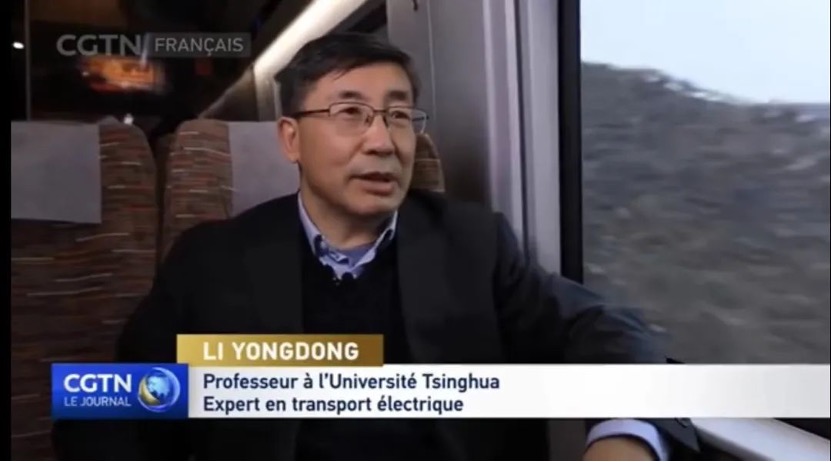
Li Yongdong during interview
The Beijing-Zhangjiakou Railway, the first railway designed and built by Chinese people, is a witness of China’s railway history and its enthusiasm for the Winter Olympic Games. Li Yongdong, a high-speed railway expert, accepted our interview and talked about the development of high-speed railways in China.
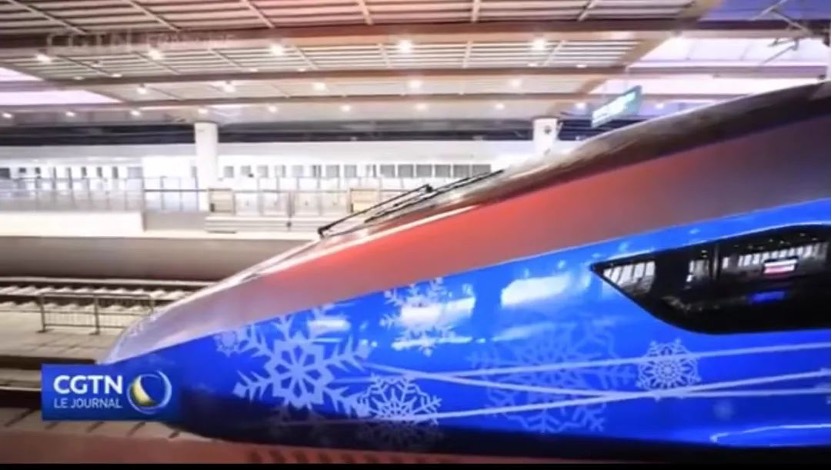
Fuxing Train for the Olympics
Li Yongdong, a professor at Tsinghua University and an expert in electric transport, explained the difference between China’s new-generation high-speed train and the traditional TGV (train à grande vitesse). He said, “The traditional TGV has no passenger seats in the locomotive, because it contains the motors and the control system. But China’s new high-speed train is a multi-drive train, which means that each carriage has its own drive and control unit. This makes the train more stable, faster to start, and quicker to run. The locomotive also serves as a business class. Unlike the old Hexie Train, which means ‘harmony’ in Chinese and uses techniques imported from France, Germany and Japan, this Fuxing Train, which means ‘renaissance’ in Chinese, is entirely designed by China. Everything in this train - both hardware and software - is independently developed by the Chinese.”
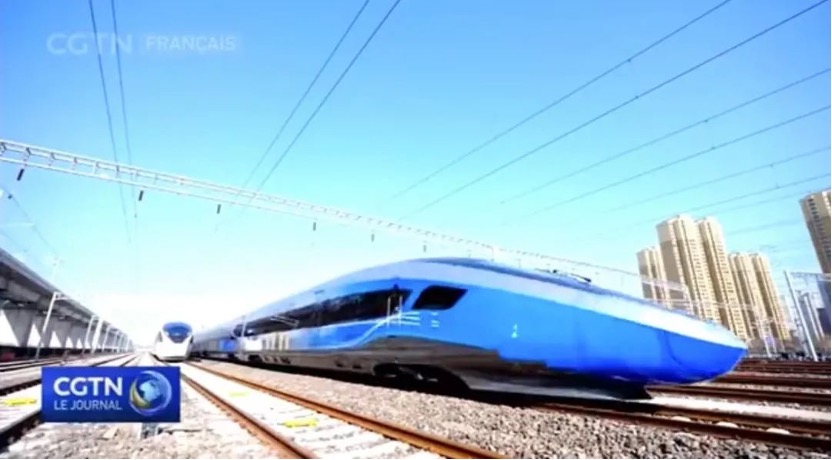
Fuxing Train for the Olympics
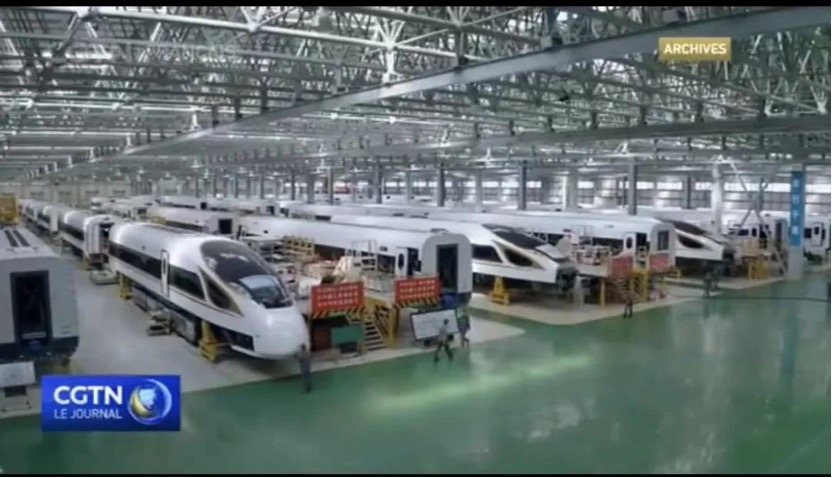
Fuxing High-speed Train
Li Yongdong, an expert in electric transport was interviewed on a special train for the Winter Olympics that runs at 350 km/h on the Beijing-Zhangjiakou Railway. This railway line has a special place in his childhood memories.
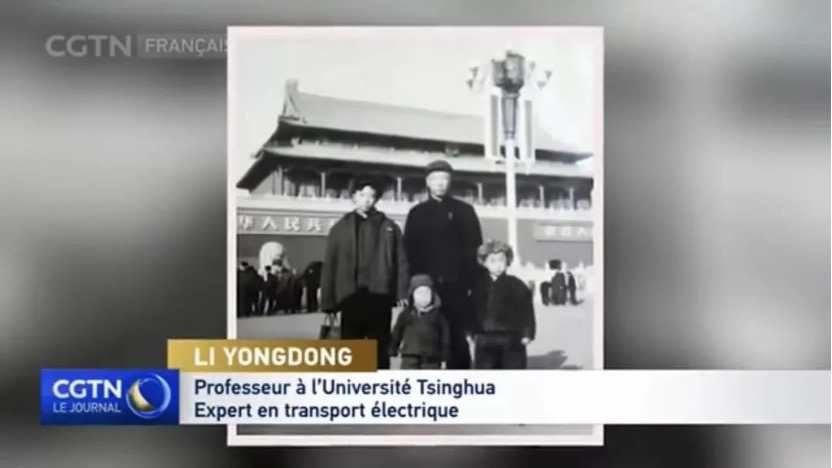
Beijing, 1966
Li Yongdong said, “I was born in Zhangjiakou and my father worked in Beijing, so I traveled between the two cities by train since I was little. The train was very slow back then, only about 35 km/h. It took me the whole night to get from one city to another, from 11:00 p.m. to 5:00 a.m. When I grew up, I studied and worked in Beijing. For decades, I took this train. The Beijing-Zhangjiakou Railway was completed in 1909 and it did not change much until 1990.”

Studied in France in1983
Li Yongdong is now a professor at Tsinghua University and a visiting professor at the Institut National Polytechnique de Toulouse. He studied in France when he was young, where he was inspired to develop a high-speed train for his homeland.

Gare de Lyon in Paris
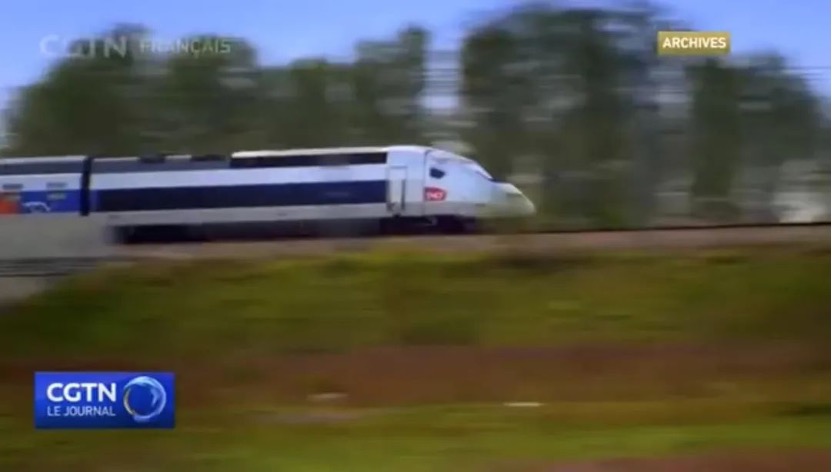
TGV in France
Li Yongdong said, “In 1983, I went to France to study. At the Gare de Lyon, I saw the French TGV (train à grande vitesse) for the first time. It was one of the most advanced high-speed trains in the world, with a speed of 250 km/h. I wondered when China would have its own TGV, and I wanted to make my contribution. I studied electrical engineering and control. After I returned to China, I focused on electric transport research. Tsinghua University has cooperated with the former Ministry of Railways and the CRRC many times. Since the Beijing Summer Olympics about ten years ago, the high-speed railway has been booming in China. Today, the total length of the high-speed railway network reaches 40,000 km. This Beijing-Zhangjiakou Railway is the first in the world that allows autonomous train operation: everything from starting, stopping, and opening doors is autonomous. The whole line is covered by 5G, so you can watch the Winter Olympic Games on the train. We are developing China’s next-generation high-speed train with smaller and more powerful motors and transformers. Now, these technologies are already installed in a train, and we have started to test their performance. In three to five years, China’s next-generation high-speed train will be put into service.”
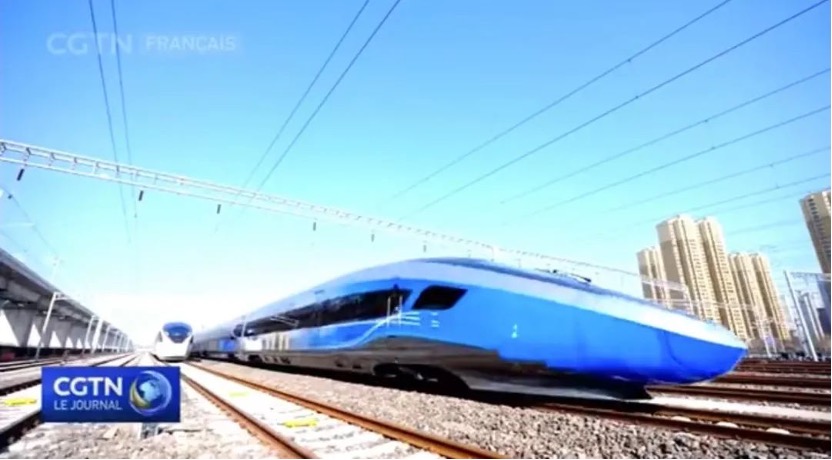
Fuxing High-speed Train for the Olympics